Guide Porsche 911 Carrera 991.1
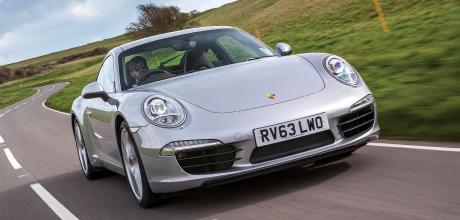
This modern 911 can be yours from just £45,000. Here’s everything you need to know about buying a used 991.1 Carrera variant, including S, 4 and 4S.
Written by Kieron Fennelly
Porsche Index: 911 991.1 Carrera
Now 12 years old, a 991.1 Carrera can be had from just £40k. Here’s everything you need to know about buying one
£40K MODERN 911! 991.1 CARRERA BUYER’S GUIDE
HISTORY & TECH
The advent of the 991 was a major event in Porsche history. An entirely redesigned platform that would underpin the whole sports car range, it was the first new chassis since the 986/996 of 15 years earlier, and effectively only the third in the 911’s 50-year history. Modifications to the chassis for the 997 had taken its development possibilities to the absolute limit and even as the 997 met its public for the first time, Porsche had begun work on the new platform.
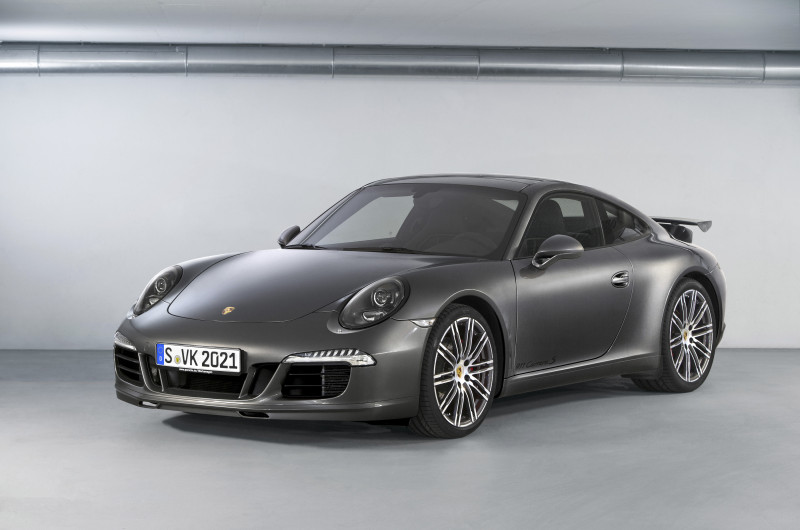
Future road safety requirements, as well as Porsche’s plans to install a new generation of electronics such as Porsche Dynamic Chassis Control and Dynamic Engine mounts, demanded a larger chassis that would also accommodate major components such as larger wheels and later, for certain models, rear steering. Lengthening the wheelbase by 100mm and extending front track would improve stability, while to offset the inevitable increase in weight, substantial use was made of aluminium alloy in the suspension subframes and much of the body: the doors, bonnet, roof and engine cover were in aluminium. The upshot was a 991 Carrera that, although longer and wider, weighed some 30kg less than its immediate predecessor.
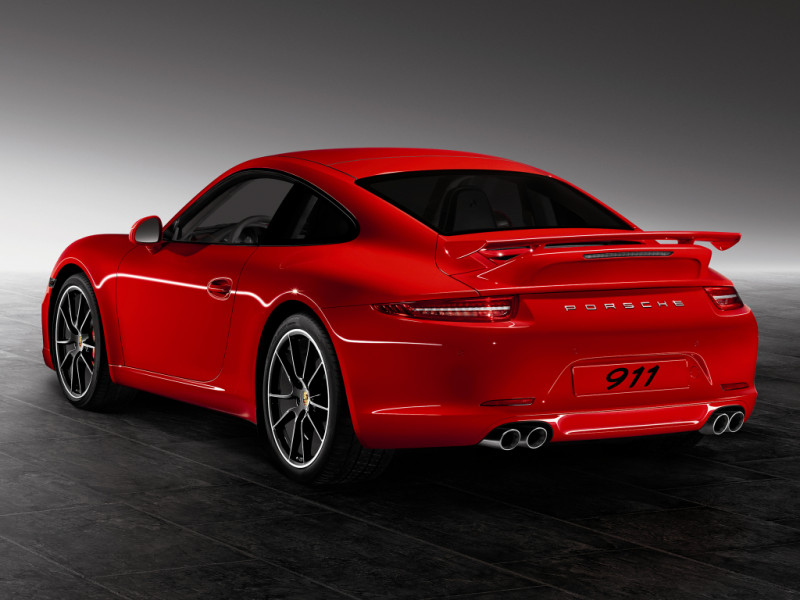
The 991 was deliberately styled to closely resemble the 997 and it was necessary to see both models together to appreciate the subtlety of the transition. However, changes to the interior were more radical. In a noticeably wider, longer and altogether better-finished cockpit, the vertical button console of the 997 had given way to a sweeping centre panel that recalled the ‘ski jump’ console of the Carrera GT, while the mechanical handbrake was eliminated, which freed space between the seats. An electric handbrake control was located under the driver’s facia. Quality and fittings were upgraded, typified by the move to chrome interior door handles – much classier than the 997’s grey plastic levers.
Porsche retained the seven-speed ZF PDK gearbox with software adjustments to enhance mpg and response time, and while the 991 laudably retained a manual option, this was no longer the Aisin ‘six’ of the 997, but a seven-speed also made by ZF. It was said that this was designed to use as many PDK components as possible. In the engine department, the 3.8 C2S of the 9A1 family was carried over from the 997 C2S. Modifications to air intakes and manifolding, and a less-restrictive exhaust and catalyst, helped to increase output to 400hp at 7,400rpm. For the base Carrera, Porsche rationalised its engine offering by dispensing with the 3.6 and using the 3.4 of the 981S. Similar modifications to the 3.8 increased output to 350hp with peak torque at a heady 5,600rpm compared with the 4,400rpm of its 3.6 forebear. Both engines now featured stop/ start technology and the 991 was also the first 911 with electro-mechanical steering. This saved both weight and one litre of fuel per 1,000km.
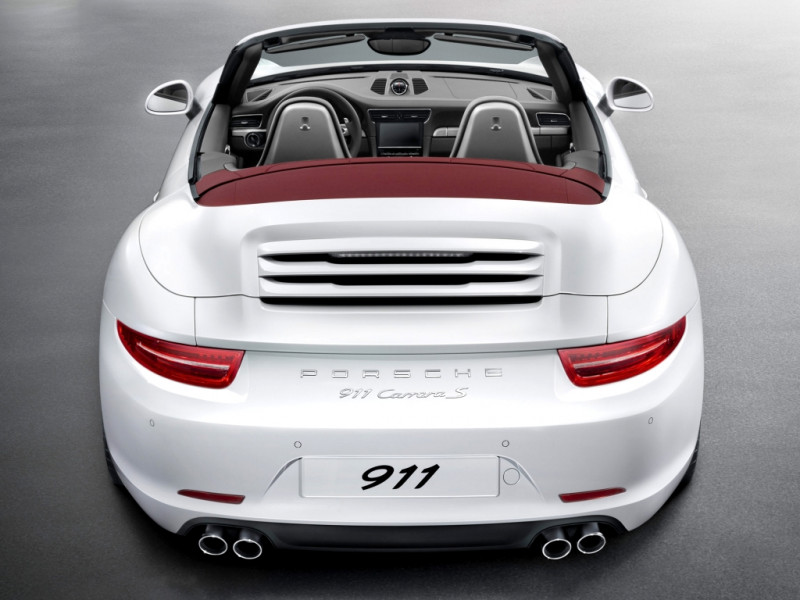
THE VALUES STORY
L ate in 2011, the new Carrera 991 went on sale in Britain. It was priced in two-wheel drive form at £71,449, while the S version incurred a £10k premium. A Cabriolet version would follow, which cost £82,334 with the same uplift for the S, and a year later the Targa became available. The latter was sold only as an AWD model and priced at £86,281, with the Targa 4S again priced £10k more.
As an entirely new 911, values were resilient and as usual, low-mileage cars with extensive options have retained their worth best. In 2017 a 16,000-mile, four-year old PDK Carrera with 20-inch wheels that was on offer at £56,995 sold quickly, realising two-thirds of its original retail price. Higher-mileage examples declined more, and the low point was probably reached around 2019, by which time many 991 Carreras were selling at around half their original retail price – rather like the 993 at this stage in its life. The Cabriolet and rarer Targa, mostly with fewer miles, depreciated less.
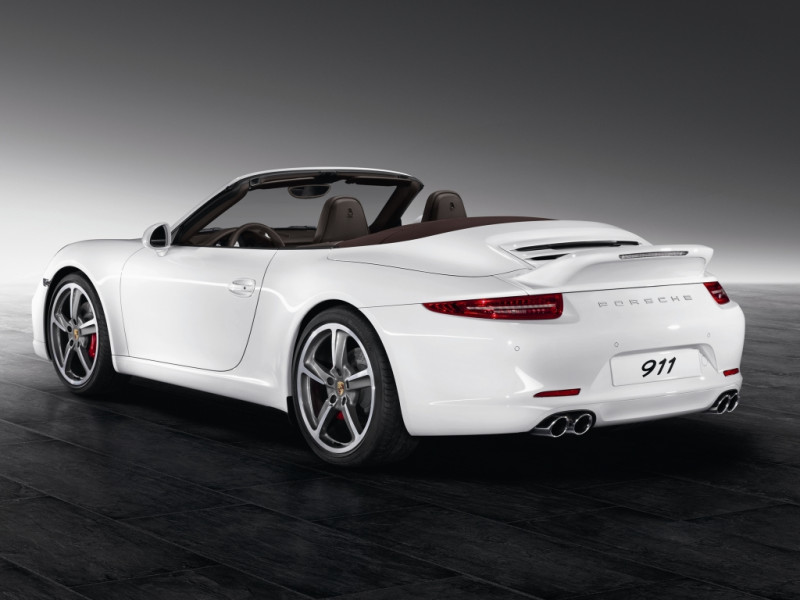
Covid and new car shortages strengthened all Porsche values, so that today the entry-level price for the 991 Carrera is around £45,000 for a multi-owner, 10-year old example. This increases to £75,000 for a GTS.
DRIVING EXPERIENCE
The immediate impression was the spaciousness of the new cabin: the windscreen was further from the driver and there was appreciably more shoulder room. However, this was at the cost of 911’s renowned visibility: to see out, most drivers needed to sit slightly higher and for urban living, parking sensors had become a necessity.
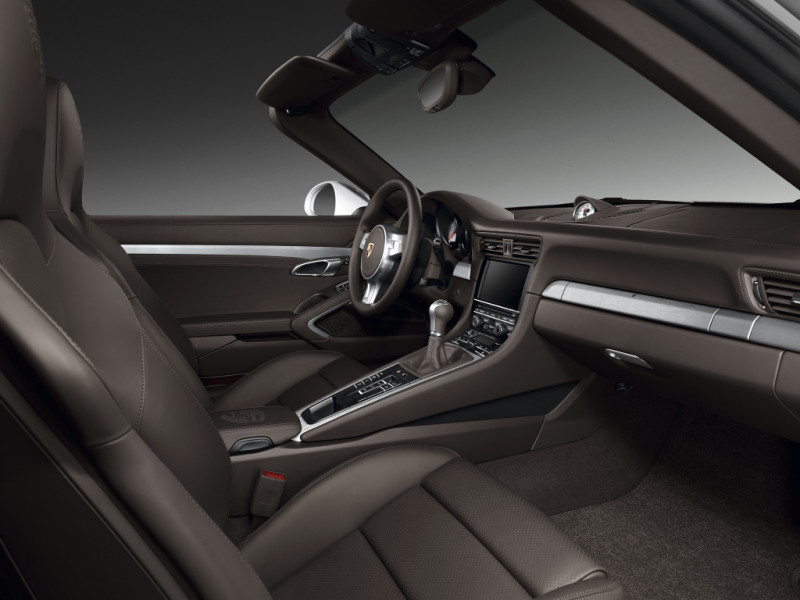
On the performance front there were no disappointments. If some commentators opined that this new, ‘big’ 911 looked more GT than sports car, it still behaved like a pure sports car, accelerating with the rousing 911 soundtrack to a better set of figures than its predecessor, and cornering with more precision than the 997. The tendency to understeer on turn-in was largely eliminated. Indeed, even the base Carrera felt every inch a highly tuned 911: docile at low rpm, it came to life only above 4,500rpm and hurtled on well past its maximum torque, which was only 1,800rpm below peak power at 7,400rpm. On the other hand, if reduced cabin noise, largely generated by the rear tyres, qualified the 991 as ‘more GT’ then no one objected to that.
The electric steering had correspondents complaining about the lack of feedback, but as with the electric handbrake, drivers have become used to it in the 10 years since its arrival. The 991’s only black mark was for its manual gearbox. The gate’s five-across-the-top design meant it was too easy to wrong-slot when changing down and the shift baulked too often. For many buyers, PDK understandably seemed a better option.
BUYING A 991.1 CARRERA
Porsche built over 120,000 of the first-generation 991s, so there’s no shortage and the usual online markets abound with choice. Cars are offered privately through sports car dealers, Porsche specialists and, of course, Official Porsche Centres (OPCs). This publication makes no secret of its preference for the specialists who often have an interest in buying the car back later, especially if they’ve been maintaining it. Their labour costs are lower than the OPCs and for older Porsche their technical knowledge is often superior.
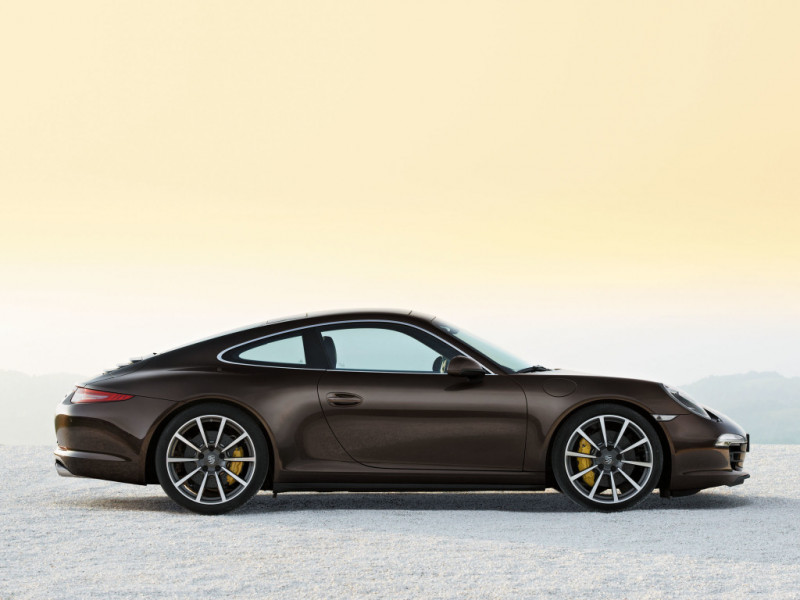
For such a high-tune engine the 9A1 is remarkably reliable, but regular maintenance is key and once outside its warranty a carefully owned car will have had its oil changed annually as well as the two-yearly service. This is even more beneficial on low- rather than higher-mileage engines.
A Porsche specialist seller will have carried out a PIWIS diagnostic check, so evidence of mileage and any over-revs or fault codes will be apparent. Bore-scoring is unusual, but can still affect this generation of 911. The causes aren’t entirely understood, but many ‘indies’ will carry out a borescope examination if asked.
The car’s history matters. Anecdotally, 991.1s that live, for example, in London and which are rarely or never extended because PDK changes up at 2,000rpm in its default setting, may well appear to shift unevenly. This is readily rectified by a factory-reset of the PDK – a simple enough DIY operation.
Porsche of this age should show no sign of body corrosion, but the same can’t be said for the underside. Exhaust bolts in particular corrode and often need replacement after eight or so years. Aluminium suspension components also suffer after a decade of salty winter roads.
Paintwork, on the other hand, should be uniformly excellent; many 911s of this age have had some respraying of the vulnerable front bumper, which should be virtually undetectable if carried out properly. White is an especially easy colour to match, and can hide a multitude of bodywork sins. Beware the resplendent white, multi-owner 991 offered at a temptingly low price by a ‘trade’ seller.
When dealing with an OPC or independent specialist, expect to find all the equipment from air-conditioning to hood (if a Cabriolet), together with the various optional extras, functioning correctly. On test drive it’s always worth checking that the PDK responds to the Sport and (if fitted) Sport Plus buttons.
The interior of a cared-for Porsche should retain the faint smell of leather. Any hint of mustiness means water ingress somewhere, which will demand investigation. The 991 cabin is very well made, and another sign of a cared-for car is that even after a decade, the interior looks almost as good as new.
DESIRABLE OPTIONS
Most 991s were delivered with PDK. Manual enthusiasts would do better seeking out post- 2014 cars: with the launch that year of the GTS, Porsche announced that the gearbox had been ‘shifting force-optimised’, suggesting it had taken note of early criticism. For PDK in particular, a worthwhile extra was always the Sport Chrono Pack with its two-stage Sport and Sport-Plus settings, and Launch Control facility. Porsche maintained that the transmission could accept any number of maximum power takeoffs, but owners with any technical sympathy would indulge in this party trick sparingly.
The most impressive (and most expensive) option, available only for the S model, was the Powerkit that increased bhp by eight per cent and widened the torque curve. No mere ‘chip tuning’ this, the Powerkit comprised a dedicated aluminium inlet manifold, polished gas flowed ports, higher lift camshafts and revised fuel mapping. The £10,000 cost included Sport Chrono and dynamic engine mounts.
Non-standard wheels such as 20-inch Sport Classics always help resale and the Sports exhaust was a popular option, although for some tastes the 991 was already sporty enough.
INVESTMENT POTENTIAL
The post-997 Carreras were all built in far too large quantities to become collectable, but the 991.1 generation does have a certain reputation as the last naturally aspirated, mass-produced 911. As with most water-cooled cars, the models likely to depreciate least are lightly used, highly specified examples and in particular, rarities like the Targa with its wonderfully trick roof, although its mechanism was shared with the Cabriolet. A little used, late Carrera with the manual gearbox will also have a certain market. Besides the Targa, the model with the most promise is perhaps the 430hp GTS, again probably in manual form.
RIGHT The heart of the 991.1 Carrera S: the 3.8-litre flat six engine that’s capable of generating 400hp.
ABOVE The 991.1’s flat six engine is all but hidden from view. Lifting the rear lid reveals two fans and caps for adding engine fluid.
BELOW With the 991.1 Carrera, Porsche satisfied a market that wanted an exceedingly capable sports car with the latest car tech and driver comforts.
TOTAL 911 VERDICT
Its detractors complained that with the 991, the 911 had become too big, too automated and its handling and road holding were such that on the public road, the challenge had gone. On the other hand, as a mass producer of cars, Porsche had to build what regulations permitted and above all what the market expected. Much as the purists regretted it, consumers want larger, tech-specified cars – even Porsche – and indeed, each successive 911 generation outsells its predecessor.
Yet where it could, Zuffenhausen did keep the tradition going: by 2011, in addition to still offering a manual gearbox, the company was already virtually alone in building naturally aspirated sports cars and both Carrera and Carrera S had engine outputs exceeding 100bhp/litre – once strictly competition levels of tune. The 991.1 remains a landmark as the last unblown 911 (leaving aside the very specialised GT3) and as such, despite die-hard concerns, is a brilliant contemporary sports car.
ABOVE Customers could choose between a seven-speed manual gearbox or the PDK automatic option. Those drivers plumping for the former had to get used to the gearlever’s five-across-the-top design.
MARKET RIVALS
At £45,000, the 991.1 gives a lot of 911 for the money, but then so do these alternatives
996 Turbo
A 20-year-old Turbo needs careful selection, but the ‘Mezger’ is reliable and – if maintained by a trusted specialist – should be relatively depreciation-free, if not cheap to own. This handsome grand tourer is easier-going if fitted with the five-speed Tiptronic.
997.2 Carrera
The smaller size and relatively analogue nature of the earlier car has earned it a reputation as the ‘modern classic’ 911. Prices have been climbing since 2019 and the rarer Carrera 3.6 with the six-speed manual offers the best value below £50k.
996 40 Jahre
This special edition 996, built to celebrate 40 years of 911 production, won’t deliver a modern drive, but is more likely to appreciate in years to come than a 991 Carrera. The 991 also has a better build quality and is ideally suited for daily driving.
911 SC
Not only are these around £45k, they are also 45 years old, and so careful inspection should be undertaken before buying one, as restoration bills can be expensive. However, a good example will provide high engagement as a weekend hack.

